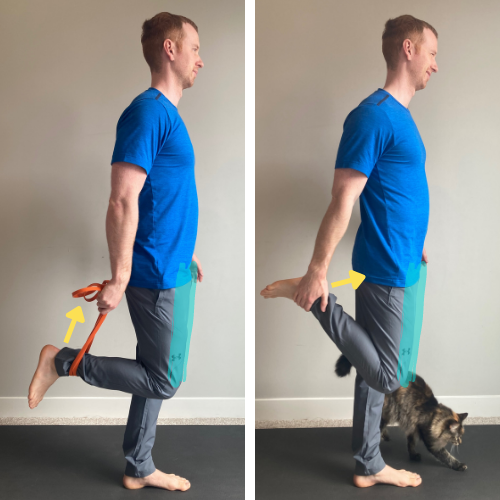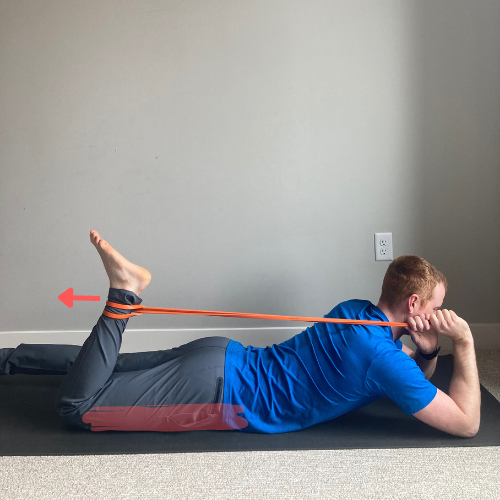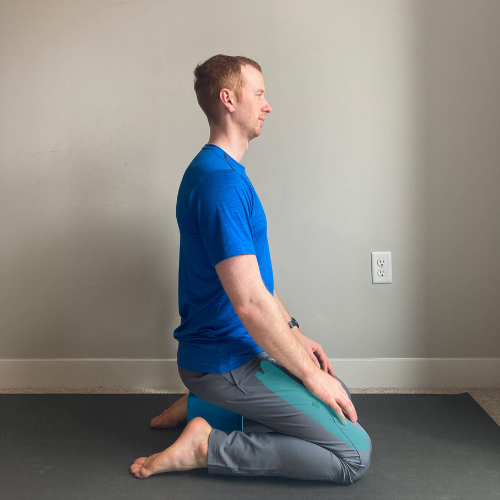5 Beginner-Friendly Quad Stretches
5 Beginner-Friendly Quad Stretches
There are a lot of activities that require you to really exercise your quads - literally anything that requires bending and straightening of your knee! Running, cycling, and weightlifting are all great at building quad strength, but without stretching after exercise could lead to tighter quads, which can eventually lead to knee pain.
If you’re looking for some beginner-friendly (and knee-friendly!) stretches for your quads, read on.
Quick Anatomy Recap: Your Quads
Your quadriceps femoris - aka your quads - is a group of four muscles that help straighten your knee and flex your hip (pull your leg toward your chest).
The vastus lateralis, vastus intermedius, and vastus medialis all originate at the top of your femur (thigh bone) and insert onto the top of your tibia (shin bone) via the patellar ligament. These three muscles are stretched/lengthened every time you bend your knee
The rectus femoris is the only one of your quads that crosses the hip, meaning it also helps with hip flexion (lifting your leg toward your chest). The rectus femoris originates on the front side of your hip bones and inserts onto the top of your tibia (shin bone) via the same patellar ligament as your other three quad muscles. Because the rectus femoris crosses your hip, it gets the greatest stretch when you are in hip extension (extending your leg behind you, so the front of your hip crease is flat)
Here’s a rough illustration of how hip and leg position change the stretch in our quads. These show the side view of the left leg. For simplicity of illustration, I’m only showing the rectus femoris, and one of the vastus lateralis (the vastus intermedius and vastus medialis behave virtually the same as the vastus lateralis in these stretches):
Straight leg with a straight hip - the vastus lateralis is in its shortest position. The rectus femoris is in a slightly lengthened position due to the hip being flexed
Bent knee with a straight hip - the rectus femoris and rest of the quads are all at their most lengthened positions (this is why most classic quad stretches mimic this position!)
Bent knee with a bent hip - the vastus lateralis is in it’s most lengthened position because the knee is flexed, but the rectus femoris gets some slack from the hip being flexed (despite the small tug it gets from bending the knee)
Beginner-Friendly Stretches for Your Quads
Two reminders before we dive in to the stretches:
You should always do some form of warm up before you stretch, or use these stretches after you’ve done some other form of exercise and your muscles are already warm.
Stretching should never hurt. With quad stretches, because we put our knees in extreme flexion, we want to be careful not to push into any sensations of pain. If your knees hurt in any of these stretches - stop. Try easing up, and stopping before you reach that sensation of discomfort, or try a different stretch.
1. Standing Quad Stretch
Start standing on your left leg (you can have one hand on the wall or a chair for balance if needed)
Bend your right knee, your right heel toward your butt
Reach down to grab your ankle with your right hand (or you can loop a strap around your ankle and grab the strap if it’s a challenging reach) to assist pulling your foot toward your butt
Stand up straight, keeping your knees underneath your hips (don’t let the right knee float off to the side), and if you need a deeper stretch, press the front of the right hip forwards
Hold for 20-30 seconds, then switch sides
2. Lying Down Quad Stretch (Passive)
Start lying on your stomach with a strap looped around your right ankle or the top of your shoe (if you just have it on the top of your shoe, flex the foot so the strap doesn’t slide off!
Bend your right knee to grab the strap in your right hand. Use the strap to pull your right heel in toward your butt. You can use just the right arm to pull on the strap, or grab the strap with both arms and hold the strap up over your shoulder like a sack of potatoes. Make sure your right knee stays in line with the rest of your right hip as you stretch
Hold this stretch for 20-30 seconds, then switch legs
3. Lying Down Quad Stretch (Contract-Relax)
Start in the passive lying down quad stretch listed above (lying on your stomach, strap on your right foot, right knee bent, stretching your right quad
Holding firmly onto your strap, kick your foot and ankle into the strap to engage your quads while they are in a lengthened position. The goal is to use the strap / your hands to help keep your leg in the same position, even though your quads are contracting, so you may need a stiff (non-elastic) strap for this exercise
Continue resisting by kicking your foot away with constant tension for 10 seconds
Then relax, let that tension go. If it feels comfortable, you can pull your foot in toward your butt for a deeper stretch
Repeat for 2 more rounds of resist-then-relax, then switch legs
4. Donkey Kicks
This is a nice variation from your “typical” quad stretch because it’s completely active - no using your hands or a strap allowed!
Start in a tabletop position on hands and knees, hands underneath your shoulders, knees underneath your hips
Keeping your back flat, extend your right leg straight behind you, then lift the right leg up so it’s at about hip height. (Higher than hip height requires arching your back, so for this exercise aim to keep it level with your hips)
Keeping your right knee lifted behind you (trying to keep it as high as your hip), bend your right knee, squeezing your heel toward your butt. You should feel your right glutes engaging to keep the leg lifted, and your hamstrings contracting to pull your lower leg toward the back of your thigh.
Still keeping your right knee lifted, extend your right leg back to straight
That’s one rep. Repeat for 8-12 reps, trying to maintain a flat back and keeping your knee as lifted as you can throughout! Then switch legs
5. Hero Pose
Unlike the other quad stretches in this list, because our hips are flexed (the front of our hip is bent/creased) in this stretch, it gives our rectus femoris a bit of a break and lets you feel more of a stretch in your other 3 quad muscles.
Start kneeling on the floor with knees hip width apart
Place a yoga block between your feet, and sit back on the block. Our goal is to find a gentle stretch through the front of the quads. If this feels challenging, add another block to sit on to make it more comfortable. If it doesn’t feel like much of a stretch, you can remove the block, or start to lean back slightly. If you feel any knee discomfort, come out of the stretch
Hold this stretch for 20-30 seconds
You’ll notice the classic “couch stretch” isn’t on this list - often I find that stretch much too intense for beginners with tighter quads (since it stretches the quads by using hip extension and knee flexion) and lead to knee discomfort. As your quad flexibility improves over time and you need a deeper stretch, then you can add the couch stretch and some more advanced variations to your practice.








